It’s been a while since we returned from Japan. I’m not even going to attempt to explain what it was like – just go, see, enjoy – but I did think I’d jot down a few tips for anyone planning a similarly short visit to Tokyo. And so here’s the ten things that I’d absolutely recommend seeing.
1) Tsujiki
Yes, the fish market. Every guidebook will tell you to go here, and the good ones will tell you to go early in the morning while you’re still suffering from the kind of jetlag that makes a 4am start seem natural rather than ungodly. Get there at 5am and fight straight through to the tuna auctions at the back, then take a walk around while trying not to get killed by the motorised carts that whiz around. The size of the market and the variety of fish on offer is genuinely breathtaking – although that may also have something to do with the heady stench of dead fish and petrol fumes.
What the guidebook won’t tell you: Tokyo’s subway lines don’t actually start up early enough to get you here by 5am. We managed to get there by 5.30 and caught some of the tuna auctions, but if I were to do it again I’d get a cab there a bit earlier.
Photos: lots, here.
2) Shinjuku
Thanks in part to a certain massively overrated movie, Shibuya has come to signify the neon heart of Tokyo for many westerners. While it is all very impressive and worth seeing, given the choice between spending two hours wandering around Shibuya at night gawking at neon or doing the same in Shinjuku, I’d pick the latter in a heartbeat. Surrounding the frankly enormous Shinjuku Station, it sprawls out in every direction in a maze of neon signs, electronics stores, bookstores, department stores, tiny restaurants, pachinko, arcades and general chaos. The effect of walking around for a few hours after dark is a bit like being bludgeoned around the head with the world biggest, sparlkiest, loudest novelty Pokemon hammer (that is to say, brilliant).
With Shinjuku station connecting the JR lines (including the Yamanote), Tokyo Metro subways, Toei subways (Oedo line) and even the private Odakyu lines, it’s also a great place to stay. We stayed in the Sunroute Plaza Shinjuku – a chain hotel that was cheapish, scrupulously clean and generally nice.
What the guidebook won’t tell you: A good guidebook should mention that, with so many commuters passing through the Shinjuku area every evening, there are loads of cheap restaurants serving the usual counter-style food (katsu, don, curry, etc etc). This makes it a good place to eat for just a few hundred yen. What they don’t mention is that the many ticket restaurants, where you order and pay at a machine, make life easy even for the kanji-illiterate. Oh, and there are some excellent ramen places, too.
It’s also worth mentioning that Shinjuku has to be one of the biggest, most sprawling and confusing stations in the world, with about a million floors and exits, so don’t ever make plans that require navigating it quickly.
Photos: a few by day, and lots by night.
3) Meiji Jingu Gyoen
The biggest and most important temple in Tokyo is probably the Yasukuni Shrine, but Yasukuni is also politically contentious – partly due to its enshrinement of over 1,000 convicted war criminals, and partly due to the Yushukan, a museum that presents a revisionist interpretation of the second world war. Both are the subject of fierce controversy within Japan. If neither dissuades you from visiting I hear it’s impressive, but I decided not to attend.
Whether or not you visit Yasukini, however, the Meiji Jingu is well worth a visit. It’s dedicated to the Emperor Meiji and Empress Shoken, and contains everything you’d expect from a Shinto temple on a massive scale, with unfeasibly huge and particularly beautiful Torri. On your way in, however, keep an eye to the left..
What the guidebook won’t tell you: .. because otherwise you might not notice the entrance to the Gyoen. This formal garden, apparently “constructed according to the design of Emperor Meiji himself in order to give recreation to Empress Shoken”, is beautiful and almost impossibly calm considering it’s only a few miles from Harajuku JR station. Huge swathes are dedicated to special iris gardens, sadly not in bloom when I attended. It costs 100Y or so to enter.
Photos: here.
This man-made island is culturally about as far from the Meiji Jingu Gyoen as you can get. Guidebooks don’t make much of it, and you can see why – there’s a Disney-ish air to the place, all artificiality and crass commercialism – but it is, in many respects, fascinating. Go to take a look around huge, themed shopping malls such as Aqua City, then see the Statue of Liberty or even the (temporary, huge) giant Gundam robot. Odaiba also provides a great view across the bay.
What the guidebook won’t tell you: Aqua City holds both the Sega Joypolis – an arcade of mindboggling size that’s worth seeing even if you do have to pay to enter – and a smaller arcade dedicated to old arcade games (Namco, Taito etc) that’s a must for video game geeks. Manga/anime fans should also look out for the Jump Shop.
Photos: many, including giant robots, here.
5) The Ghibli Museum, Mikata
Those who have not heard of Studio Ghibli should click here, buy a lot of DVDs, watch them, then return here. If you have seen the films, you’ll want to visit this museum, located in Mikata, in the western suburbs – and in which case you’ll need to buy a ticket months in advance (see below).
The museum itself is an entirely Japanese-only affair save for a single leaflet in English, but as it’s targeted at kids this isn’t really a problem – even if you can’t read a word, there’s lots to enjoy. As well as the exhibits on the making of Ghibli animations (all very hands-on, with flipbooks etc) and the reference material used (photos of European towns taken when designing the look of Kiki’s Delivery Service, for example) there’s a bookshop, a cafe and, best of all, a giant (as in life-sized) cat bus for small kids to play on while their older siblings and adults watch enviously. The grounds and the museum building are beautiful, and each visitor also gets to see a Ghibli film created solely for the museum in its own cinema – there are a few, and what you see is random, but ours was really rather charming.
What the guidebook won’t tell you: Fortunately some friends warned us that tickets sell out months in advance, and with a very limited number released at any one time. To buy tickets in the UK, visit the My Bus travel agency – it’s in the basement of the Mitsukoshi department store on Regent Street (tel 020 7976 1191). Passports are needed to prove that you’re not a Japanese citizen attempting to jump the queue for tickets released in Japan. We purchased ours three months in advance. Also, the museum has a limited capacity and no timed-ticket system for international tickets – so show up early to save having to wait around outside.
Photos: are not allowed inside the museum, but a few of the outside are here.
6) Meguro
An odd one, this, but stick with me: one afternoon I found myself in Ebisu outside an annoyingly closed beer museum, so with two hours to kill I took a walk. I got totally, utterly lost, ended up in Meguro and was thoroughly glad I did.
Meguro isn’t at all touristy, although it does play home to a castle-shaped love hotel, the biggest and scariest wedding shop you’ve ever seen, a rather beautiful shrine dedicated to the victims of a great fire and, apparently, the Curl Up Cafe cat cafe (didn’t see this myself). It’s worth visiting for an hour or so, though, to see a bit of everyday Tokyo life outside the neon-craziness of Shinjuku and the other central areas – it’s full of coffee shops, pachinko parlours and people just getting on with stuff. Be prepared to be stared at a little more than usual.
What the guidebook won’t tell you: Pretty much anything at all. I think mine mentioned the Meguro Gajoen, which is indeed worth seeing.
Photos: a few here.
7) The Shinkansen
If you go to Japan, get a Shinkansen at some point. If you have the time, I’d say Kyoto would be a good destination – we didn’t, so we went to Hakone for the Onsen (see #8) – but the journey is, in this case, as important as the destination. Why so good? Well:
- They are as fast as bloody hell. Or possibly much faster. When the really fast services fly past in bad weather you can actually see a shockwave push the rain out of the way in front of them. Zwoosh.
- Despite this, the train runs so smoothly it could be gliding on ice.
- They are so punctual that the average deviation from the timetable, averaged over 160,000 trips, is around six seconds. Six fucking seconds. In a country that gets regularly whunked by earthquakes.
- People don’t talk on the sodding mobile phone on Japanese trains.
Or to put it another way: ride a Shinkansen and the utter shitness of all other trains, everywhere in the world, becomes abundantly clear. This is how rail transport should work.
What the guidebook won’t tell you: This isn’t Shinkansen related, but it is to do with trains: when you arrive at Narita, buy the N’EX and Suica special deal. This gets you the fast service into Tokyo, plus an Oyster-style card that works on all JR and subway (Toei and Tokyo Metro) lines in the city, at a discount.
Photos: see inside the Shinkansen here and here.
8) Onsen
I don’t have a photo of this one, for reasons that will become obvious: onsen are Japanese hot spring baths. In order to partake of a traditional one you’ll have to leave Tokyo; we headed to Hakone, near Mt Fuji. Some can be used for a fee, while many are reserved for the guests of a particular hotel or ryokan (traditional inn). We stayed in a ryokan with its own onsen – I’d recommend this, although it is very expensive by budget-travel standards. Look for outdoor onsen with a view if the weather’s good.
However you get to an onsen, though, you’ll come out feeling either invigorated, broiled or both. I was sceptical, but it’s absolutely worth trying: cooking slowly in a hot pond while looking out over the mountains and forests of Japan at 7am is a fantastic way to start the day.
What the guidebook won’t tell you: Onsen etiquette is pretty complicated. At the end of the day, however, it boils down to something like this: make sure you go in the right onsen (learn the kanji for Male and Female, or just ask someone), get completely naked leaving your clothes in the ante-chamber, wash yourself thoroughly while sitting on a bucket type thing that’ll be provided, then get in the bath and cook. I’ve heard that “modesty towels” are a must, but I didn’t see a single person bothering with this – instead small towels were used solely for brow-mopping.
Photos: of the onsen? Er, no. Photos of the ryokan and beautiful Hakone are here.
9) Eat until your body complains, and then some more
If you don’t like Japanese food then Tokyo is, funnily enough, not a good place to visit. If you do, then it’s obviously time to get stuck in. We ate one formal dinner at the ryokan (above), then largely concentrated on the “great cheap food” variety: sushi, katsu, don, noodles of every shape and size, gyoza, yakitori and so on. Oh, and ramen. You can buy passable ramen in London, but nothing I’ve had anywhere else compares with the real stuff in Tokyo. And the grilled fish is also great. And there’s good beer. And shochu.
What the guidebook won’t tell you: Ordering can be tricky when menus are in kanji, but knowing the words for one, two, this one and that one can get you a very long way on most menus, especially when many cheaper restaurants include images of set meals. Also, try giru – cold soba noodles that you slurp through a small container of soy-ish broth. I’d never heard of them before, and they’re great.
Photos: Not really, no. I was too busy stuffing my face.
10) Fuji-San
No trip to Japan would be complete without seeing the iconic Mr Fuji, right? Er, probably – except we failed on this count. Part of the reason for heading out to Hakone was to see Fuji from one of the many viewing points in the area, but sadly we were foiled by thick clouds at every turn. Hope you have better luck.
What the guidebook won’t tell you: That even in the middle of summer it gets incredibly cloudy up in the mountains around Owakudani. Although, to be fair, we should have guessed.
Photos: fail.
And that’s it. It’s not a complete account by any means, but I hope this might prove at least vaguely useful to somebody. We’ll be going back as soon as possible – next time to hopefully include Kyoto and a glimpse of that mountain – and I’ll update this with any new information as and when I can.
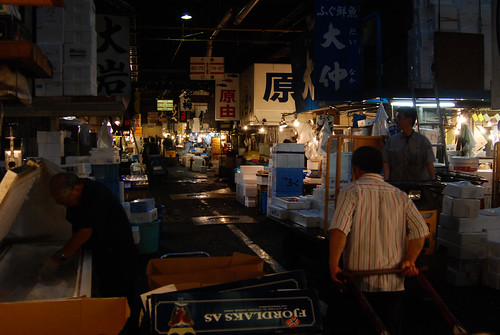
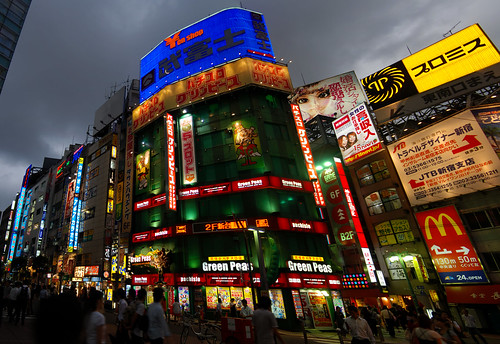
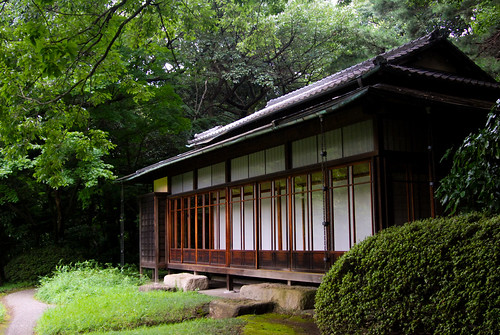
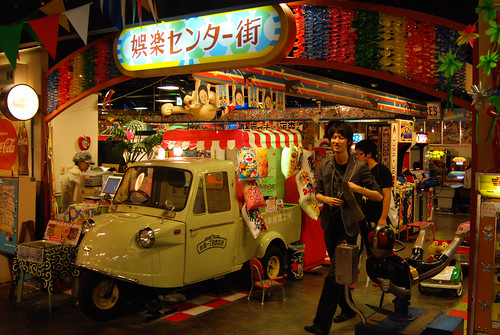
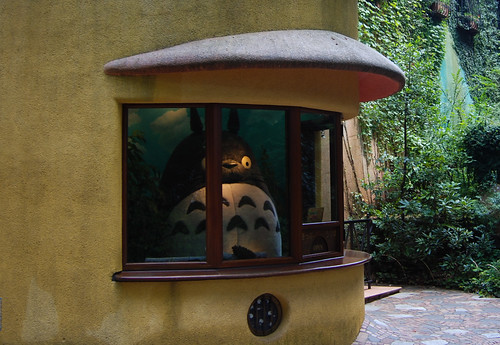
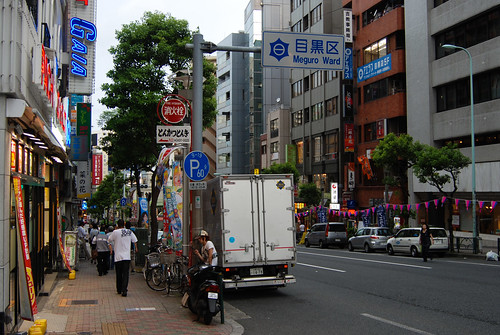
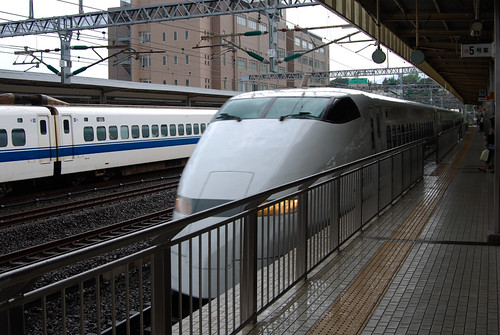
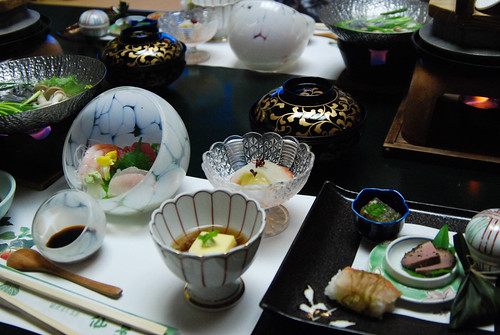
Leave a Reply
You must be logged in to post a comment.